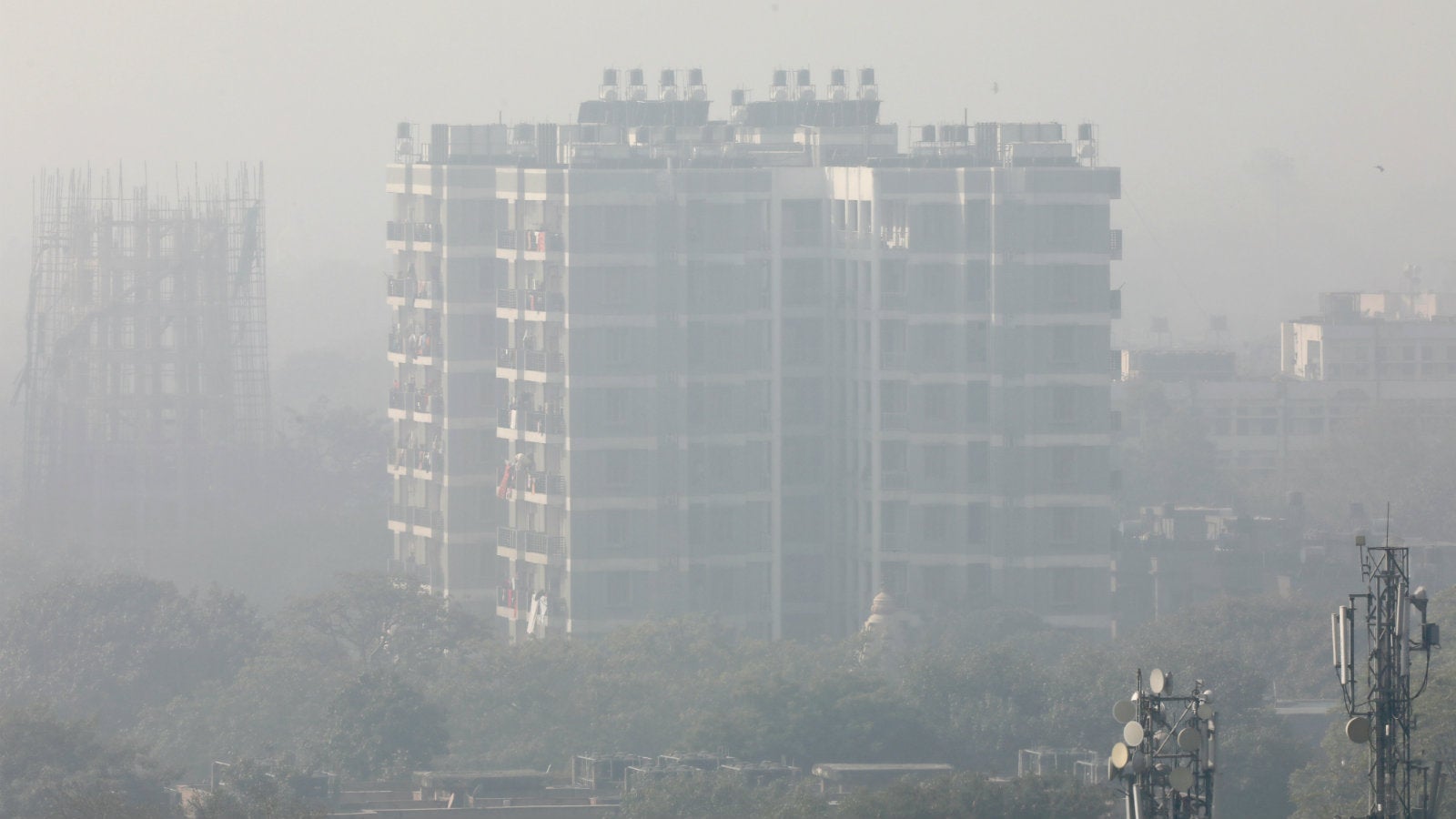Delhi is ending 2018 engulfed in toxic air
This week, Delhi residents are battling toxic air once again.


This week, Delhi residents are battling toxic air once again.
On Dec. 23 and Dec. 24, as the weather got chillier and fog engulfed the city, India’s national capital reportedly experienced its most polluted days of the year, with the air quality index at an “emergency” level. Since then, things have just barely improved as high levels of fine particulate matter have kept the air in most parts of the city “hazardous” even today (Dec. 26). At this level, residents are at risk of serious health effects and are encouraged to avoid all outdoor activities, an instruction that is especially difficult for those who have to work outside.
Delhi’s air pollution makes the headlines every year during the winter months, usually, after farmers begin burning crop stubble in neighbouring states such as Punjab and Haryana. The trouble with Delhi is its geography, which ensures that pollutants carried from other states in the wind are trapped in the air above it. In this context, the addition of vehicular emissions and other regular polluting activities turns the city’s air into an especially toxic mess.
The situation has gotten so bad now that chief minister Arvind Kejriwal has reportedly suggested the city may see the return of the odd-even policy, which allows vehicles with odd and even number plates to only ply on alternate days. It was announced in December 2015 and put into practice for a few weeks in January and April 2016 with slightly better results the first time compared to the second, according to a study (pdf) by the Energy Policy Institute at the University of Chicago. The researchers suggested that meteorological factors could be part of the reason why the policy seemed to work better in January, when slow wind speeds ensure that pollutants remain suspended over Delhi. At this time of the year, reducing the number of vehicles on the road can make a noticeable difference.
However, the odd-even policy isn’t encouraged as a good long-term measure. Instead, stricter pollution controls are needed, not just for vehicles but also for industries such as manufacturing and construction. But until that happens, Delhi will continue to struggle with extremely unhealthy air.
For at least the next three days, its air quality is expected to remain “very poor,” with dangerous levels of PM2.5 and PM10, according to the System of Air Quality and Weather Forecasting And Research, a monitoring initiative of India’s ministry of Earth sciences.